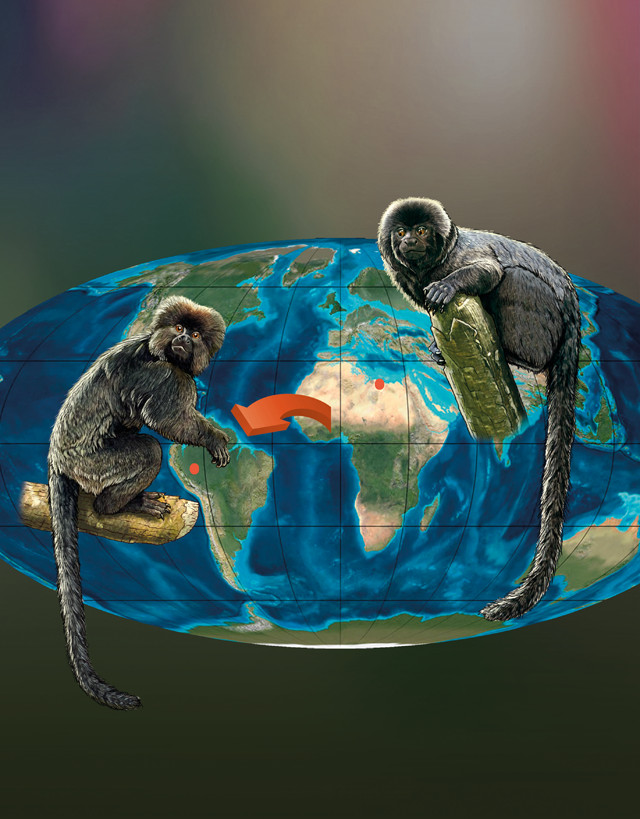
by Mary Caperton Morton Monday, June 1, 2015

A strong resemblance between a newly discovered Peruvian primate and African species supports the theory of dispersal from Africa to South America. Credit: Ron Blakey.
Monkeys originated in Africa, but how and when they first appeared in Central and South America has long been something of a mystery. Now, a new set of fossilized teeth places monkeys in South America about 10 million years earlier than previously thought.
The teeth, found in Peru, date to approximately 36 million years ago, during the Late Eocene Epoch. Previously, the oldest fossil evidence for New World monkeys was found in Bolivia and dated to the Oligocene, about 26 million years ago. The new species, named Perupithecus ucayaliensis and reported in Nature by Kenneth Campbell of the Natural History Museum of Los Angeles County and colleagues, bears striking resemblance to Eocene-aged African primates, supporting the notion that that the Peruvian primates were recent immigrants from Africa.
South America and Africa have been distantly separated since the Late Cretaceous, so a land bridge is an unlikely explanation for their migration to the New World, Campbell and colleagues wrote. However, they added, earlier studies have suggested the animals could have feasibly been rafted across the Atlantic from Africa aboard floating debris, such as mats of vegetation.
© 2008-2021. All rights reserved. Any copying, redistribution or retransmission of any of the contents of this service without the expressed written permission of the American Geosciences Institute is expressly prohibited. Click here for all copyright requests.